Demand
Low priority of evidence for decision-marking
There is little (though increasing) demand for (RIE) evidence from different stakeholders, most importantly from donors (i.e. BMZ) and partners. This is accompanied by the observation of interviewees that other types of evidence (e.g. from process evaluations or expert opinions) are often ascribed equivalent or higher utility and quality.
Potential solutions
Potential solution Create awareness for evidence take-up
Creating awareness for RIE, SRs and EGMs is central to increasing take-up of rigorous evidence. When creating awareness for the take-up of global evidence, it is particularly important to address the widespread belief that the global RIE evidence base does not lend itself to the GDC portfolio. Our analysis of 3ie’s DEP found that it contains a large number of studies that are indeed potentially relevant to the GDC portfolio.
Potential solution Create opportunities for RIE exchange
Creating opportunities for RIE exchange can be a potential measure to increase evidence take-up, as direct, personal interaction is often more effective in fostering evidence take-up than disseminating written documents. Exchange can happen as peer-exchange, research-practice-exchange or policy-practice-exchange. The yearly BMZ-funded conference of the “Poverty reduction, equity and growth network (PEGNet)” is an example of such an event where research and practice meet to present and discuss new RIEs.
Potential solution Demonstrate leadership commitment to RIE
Leadership commitment and giving priority to evidence-informed decision making is an important measure to foster evidence take-up. Leadership commitment can be expressed by giving priority to evidence generation and take-up, by functioning as role models and explicitly using RIE findings for decision making or by rewarding evidence generation and take-up.
Potential solution Include the take-up of rigorous evidence in the organisation’s lead strategy
Organisations should commit to evidence-informed decision-making in their lead strategy to facilitate the take-up of self-generated and global RIE evidence. Such strategies provide orientation and help anchor RIEs during changes in leadership. BMZ’s recent strategy document for evaluation in GDC is a good example of such an effort in that it explicitly encourages impact orientation and the role of accompanying research such as RIEs within GDC (BMZ, 2021).
Potential solution Pass formal legislation or requirement
Formal legislation or requirements at the national level can be potential measures to increase RIE initiation. In concrete terms, this could be done by explicitly including the obligation to draw on rigorous evidence in existing process flows and respective guidance documents. Referring to scientific studies in the formal reporting documents would allow stakeholders, including BMZ employees, to verify the lines of reasoning. Formal requirements could also regulate the dissemination of results. Formal legislation and requirements for evidence take-up are judged heterogeneously. Although an explicit requirement can potentially be highly effective, there is also a chance that a requirement would not be practically feasible or not taken seriously. Further, formal requirements need to be combined with other measures such as resources and capacity development to be effective.
Potential solution Set incentives for evidence take-up
Next to formal regulations, setting incentives can enhance evidence take-up, for example by including evidence take-up in annual staff targets, or giving visibility to “evidence champions” who push for evidence take-up. This could be done, for example, by granting evidence awards, such as the Africa Evidence Leadership Award (Africa Evidence Network, 2021). To incentivise researchers to conduct evidence syntheses, it would be beneficial to recognise SRs as an adequate contribution to a PhD thesis.
No formal requirement for the take-up of rigorous evidence
There is no explicit requirement or formally structured process to use the global RIE evidence base for policy making, programming and project implementation. Though the BMZ guidance documents implicitly require the take-up of self-generated evidence, which can include RIE evidence, there is no requirement to make use of the global RIE evidence base.
Potential solutions
Potential solution Pass formal legislation or requirement
Formal legislation or requirements at the national level can be potential measures to increase RIE initiation. In concrete terms, this could be done by explicitly including the obligation to draw on rigorous evidence in existing process flows and respective guidance documents. Referring to scientific studies in the formal reporting documents would allow stakeholders, including BMZ employees, to verify the lines of reasoning. Formal requirements could also regulate the dissemination of results. Formal legislation and requirements for evidence take-up are judged heterogeneously. Although an explicit requirement can potentially be highly effective, there is also a chance that a requirement would not be practically feasible or not taken seriously. Further, formal requirements need to be combined with other measures such as resources and capacity development to be effective.
Potential solution Set incentives for evidence take-up
Next to formal regulations, setting incentives can enhance evidence take-up, for example by including evidence take-up in annual staff targets, or giving visibility to “evidence champions” who push for evidence take-up. This could be done, for example, by granting evidence awards, such as the Africa Evidence Leadership Award (Africa Evidence Network, 2021). To incentivise researchers to conduct evidence syntheses, it would be beneficial to recognise SRs as an adequate contribution to a PhD thesis.
Potential solution Systematically consult the RIE evidence base when designing projects
A systematic consultation of the global and self-generated RIE evidence base early on when designing projects can foster take-up of global RIE evidence. A systematic anchoring could happen by integrating reflection points in existing process flows and in guidelines about how to create module proposals or brief statements. Those reflection points can ensure that state-of-the-art RIE evidence supports the proposed project. AFD, IDB, Oxfam GB, WWN and J-PAL perform such reflective learning sessions. Similarly, USAID, Oxfam GB and FCDO reported having long-term formalised partnerships with universities and think tanks to provide inputs for project design using global evidence.

